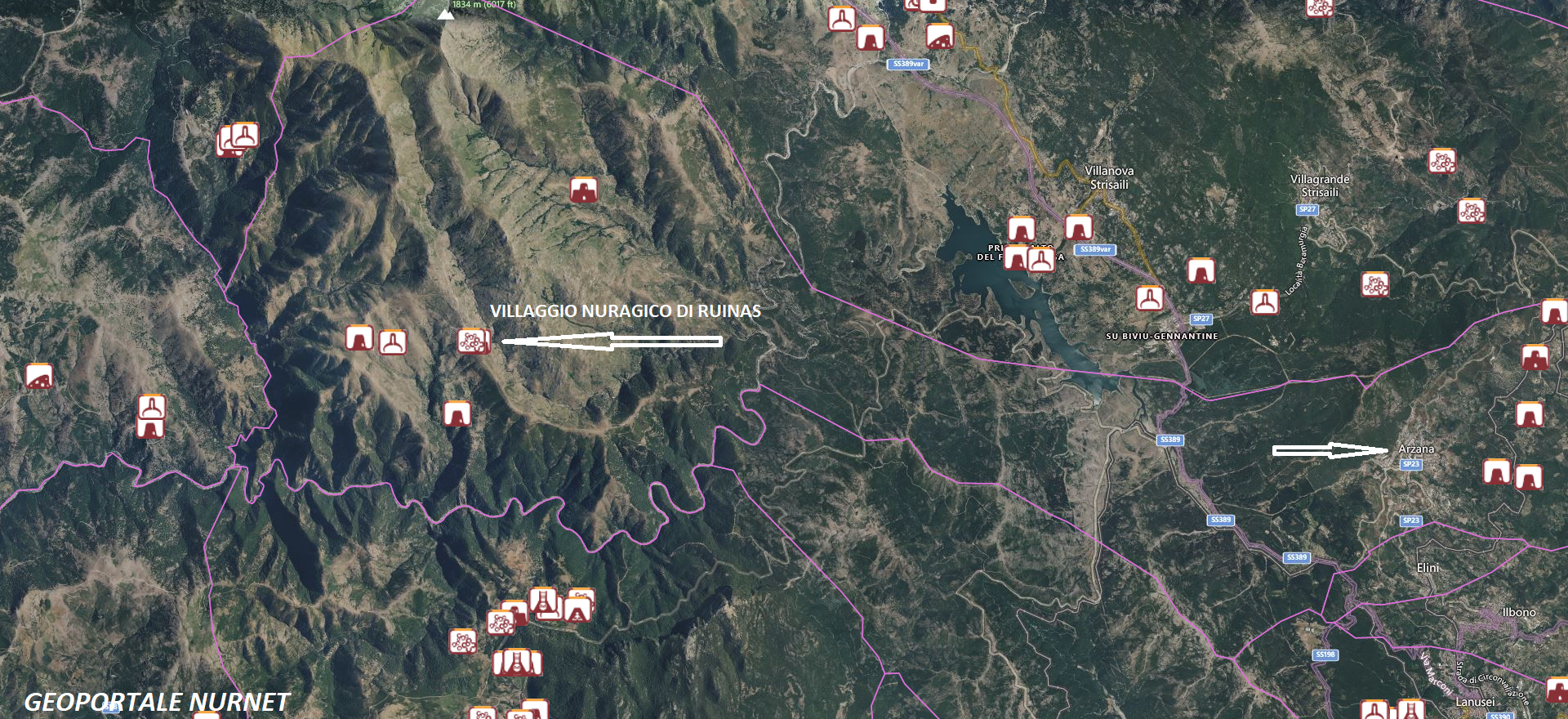On the official site Sardegna Turismo, it reads as follows: “rises at the foot of theGennargentu, at about 1200 meters above sea level, stands out as one of the ‘highest’ Bronze Age settlements in Sardinia; moreover, the traces of the village that surrounds it tell a story steeped in legend.
The nuraghe Ruinsis ‘immersed’ in a mountainous landscape ofArzana, not far from woods, waterfalls, and springs.Orruinas–how it is called by the Arzanese – it must have been a settlement of particular significance: in addition to the nuraghe, it has a Giant’s tomb, (perhaps) a sacred well, and above all a vast village which today counts about 200 huts, but it is hypothesized that originally there were many more.
The nuraghe has a trilobate structure, the main tower stands at a height of about 8 and a half meters, and the main chamber still has the covering oftholos,“while to the left of the entrance you will identify the staircase that led to the upper room, which has since collapsed…”
As is known, Arzana is one of the towns in Ogliastra that boasts records of longevity. In this regard, in an article by Giovanna Falchetto,published in 2017 on the Confartigianato website, Raffaele Sestu, a doctor and former president of the Sardinian Pro Loco, was mentioned.
He noted how many of the centenarians came from Ruinas and that around 1400, the inhabitants of the site abandoned it to move down to the valley due to the plague.
One of the first groups to arrive in Arzana was the Congera family, among whose members was Sofia Congera, who died in the mid-nineteenth century at nearly one hundred years old.
“The fact that many of the centenarians have lived or worked for a long time on Gennargentu,” Sestu emphasized, “cannot be just a coincidence: I call it the G Factor.”
Sofia Congera’s granddaughter was named Rafaela Monne, and the cited article by Giovanni Falchetto continues:
“Angelo Stochino was born in Arzana on May 1, 1889.
A life spent on Gennargentu caring for livestock. His farm was among the most distant from Arzana, in the locality of Sa Pruna, on the border with Desulo.
The birth certificate of his wife Rafaela Monne,report the date of May 28, 1898.
After the engagement with Angiulinu – as they called him in the village – every week she prepared the pistoccu together with her mother, at dusk she would mount her horse and travel alone under the stars to arrive at dawn to her beloved and deliver the supply of bread.
In the land on the slope of Gennargentu, she also took care of the garden and the cultivation of cereals and wheat. Then she would prepare dinner for her husband, who sat next to the fireplace smoking a cigar.
“My minestrone was special because I prepared it with lard,” she often said.Aunt Rafaela.The two were first cousins, madly in love.
They got married in 1913, a relationship lasting 77 years without ever becoming parents.
He died on January 8, 1990, at the age of 100 years and seven months.
She passed away on October 4, 2007, at the age of 109 years and 4 months.
The photos of nuraghe Ruinas are by: Gianni Sirigu, Andrea Mura-Nuragando Sardegna, Lucia Corda, and Giovanni Sotgiu.











